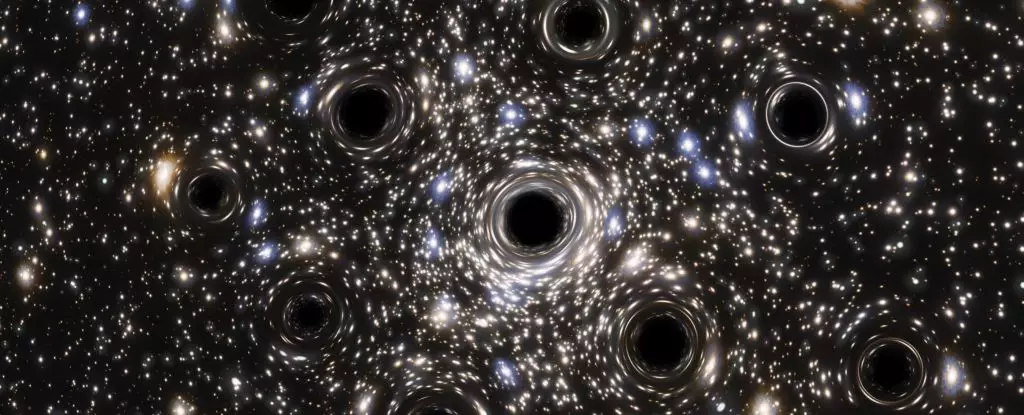The ongoing investigation into the cosmic features of our universe continually reveals mysteries that challenge our existing understanding. One particularly intriguing subject of study is Omega Centauri, a massive globular cluster situated approximately 17,000 light-years from Earth. Recent findings suggest that this celestial wonder may harbor not just one, but a multitude of elusive stellar-mass black holes. This revelation sheds light on significant questions within the realm of astrophysics and raises further inquiry into the nature of black holes and their formation.
Historically, astronomers have speculated that the gravitational pull within Omega Centauri was due to a single, massive black hole—one that could practically dwarf our Sun by thousands of times. However, new analytical methods have sparked a shift in this narrative, proposing the existence of a swarm of black holes, each formed from the remnants of massive stars. Astrophysicist Andrés Bañares Hernández, collaborating with the Institute of Astrophysics of the Canary Islands, delineates the value of this discovery, suggesting that it may bridge a gap in our knowledge regarding the classification of black holes, especially concerning the elusive intermediate-mass black holes (IMBHs).
The search for IMBHs has been a topic of heated discussion among astronomers for decades. Traditionally, black holes are categorized into two classes: stellar-mass black holes, born from the collapse of massive stars, and supermassive black holes, which reside in the cores of galaxies. The existence of IMBHs, theorized to fall somewhere in between—ranging from 100 to 1,000 solar masses—has yet to be firmly established. The implication that these intermediate entities could contribute to our understanding of galactic evolution is tantalizing. Omega Centauri, a vestige of a dwarf galaxy, offers an ideal testing ground for studying the characteristics and influences of IMBHs.
One of the reasons Omega Centauri is of particular interest to astronomers is its dense star population, comprising an estimated 10 million stars within a relatively confined area of space. As a globular cluster, it is held together by mutual gravitational attraction, creating an environment ripe for gravitational interactions. In his research, Bañares Hernández and his team utilized new datasets that included the movements of pulsars—rapidly rotating neutron stars that emit regular beams of radio waves. This inclusion allowed for precise measurements of acceleration and movement within the cluster. The findings indicated that the stellar motions in Omega Centauri could potentially be explained by the presence of a group of smaller stellar-mass black holes.
The implications of this finding are broad and significant. It challenges the previous notion of a singular, massive black hole in Omega Centauri while introducing a more complex framework for understanding black holes’ roles in star clusters. The current evidence suggests that stellar-mass black holes could be intermingled with an IMBH, a scenario that would illuminate the relationships between different types of black holes. This coexistence could serve as a mechanism for understanding how black holes could grow over time through hierarchical mergers—where smaller black holes collide and subsequently meld into larger entities.
While the quest for IMBHs continues, this groundbreaking study refines our understanding of Omega Centauri and its hidden mysteries. The dual presence of stellar-mass black holes and potential IMBHs opens new avenues for exploration that could lead to further discoveries in the coming years. The research also lays the groundwork for a future in which advanced observational techniques and new theoretical frameworks converge to solve the riddles surrounding black holes and their profound influence on the universe.
The shifting narrative surrounding Omega Centauri and the newfound evidence of a swarm of stellar-mass black holes enriches our understanding of cosmic phenomena. As astronomers strive to unravel these mysteries, they not only enhance our knowledge of black holes but also illuminate the intricate dance of gravitational forces that shape the universe. The pursuit of understanding black holes—both stellar and intermediate-mass—remains an exhilarating frontier in astrophysics, promising exciting revelations that could redefine our perception of dark gravitational entities in the cosmos.

